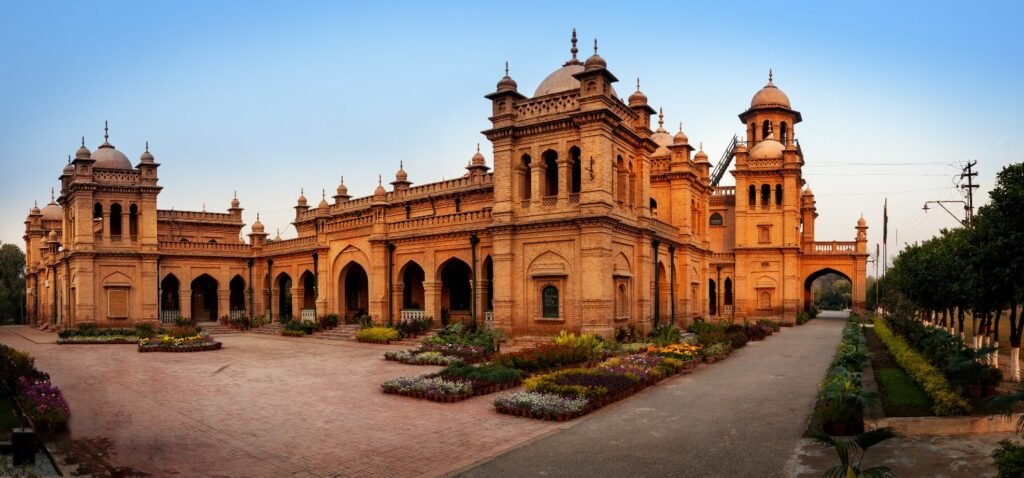Top 12 Handicrafts of India

India is a country in South East Asia that is enriched with different cultures, languages, regions, and ethnicities. Each region has its own unique vibrancy and diverse range of handicraft products that date back thousands of years. The subcontinent due to its rich cultural history and heritage has always been home to some skilful and rare craftsmen.
Some are the most remarkable handicrafts of India are as follows:
1. CARPET WEAVING
Carpet weaving is one of the commercial handicrafts of India. These handmade designs are known for their complicated design patterns that become the centre of attraction for local and international audiences. Uttar Pradesh is considered the core carpet-producing industry. Some of the most famous types of carpets are wool carpets, bamboo, jute, cotton, coir, and grass carpets. These types of carpets require some top-notch craftsmanship that has been perfected over the centuries and generations. Uttar Pradesh constitutes the largest carpet weaving industry, more than 500 carpet manufacturing factories are here in the city of Bidohi. Jammu and Kashmir are known for silk carpets that are woven in Srinagar. You can easily place online order to buy this amazing handicraft from india.

2. PASHMINA SHAWLS:
These shawls are made from high-quality cashmere wool. Its entire making may last for 10 days and is hand-operated. Moreover, it is found in bulk form in Kashmir. Phasmina is wool in its purest form. The shawls have gone through great procedures from combing to sinning and to weaving and finishing all of this is done manually. Marshy and the cosiness of these shawls make them bestsellers. It takes about 175 hours to complete a fine Pashmina shawl. It has a great demand in the whole of India and has succeeded in getting international interest as well

3. PHULKARI:
One of the most unique and traditional handicraft products from India complicated embroidery technique, it is used to refer to shawls and phulkari. In this technique, there is the usage of vibrant colours makes it attractive. This beautiful item has roots in Amritsar Punjab. This type of handicraft is renowned as flower work in Haryana. Chashebulbul is an important handicraft in which white or yellow silk floss is done on cotton khaddar. It is widely useable in the forms of jackets, bags, tablemats,juttis, etc.

4. WOODWORK:
This handicraft is recognized for generating outstanding pieces with top-level quality wood which include Mahogany, teak, Saal, Sheesham, and Ebony. Woodwork is done in such a way that it is used to produce mirror frames, cupboards, furniture, and religious idols. The place that is well known for its woodwork is Saharaanur in Uttar Pradesh. This includes Chhattisgarh famous for wooden masks, window frames, doors, and sculptures. Furthermore, Andra Pradesh is famous for cutlery, dainty boxes, and knives. Indian woodwork has a lot of international exposure and interest as well.

5. JUTE:
India is very famous for jute handicrafts. The major jute-producing areas include Bihar, West Bengal, and Assam. Such crafts are further extended to bags, table runners, office stationaries, bangles, and jewellery.

6. POTTERY:
The establishment of pottery can be traced back to the Haran civilization. The pottery in Uttar Pradesh is orange and light red and darker shades are seen in Himachal Pradesh. In addition, Bikaner is highlighted for famous pottery, okra for its geometrical designs, Jaipur for its blue pottery, and Alwar for Kagzi pottery.

7. SHELL
India is occupied by water on three sides which makes its obsession with shells. These shells are used to make many remarkable and eye-catching pieces including chandeliers, bangles, mirror frames, table mats, etc. The masterpiece of these shell handicrafts is found in Goa and Orissa.

8. BAMBOO HANDICRAFTS:
It is considered the most eco-friendly handicraft in entire India. Aside it has come out as a distinctive, diversified, and flawless handicraft. Moreover, it is used to make baskets, jewellery boxes, cross-bow furniture, mats, and wall hangings. The specificity and importance of this handicraft are much found in West Bengal, Assam, and Tripura.

9. BRASS HANDICRAFT:
Brass is known for its toughness and such features add to its dominance when used as a handicraft. There are multiple items made up of brass i.e. Lord Ganesh as a figure in different postures, vases, tabletops, perforated toss, ornament boxes, wine glasses, etc. The people dealing with such handicrafts are known as KANSARIS.

10. ZARDOZI:
It is the embroidery done through the usage of gold and silver threads with the addition of earls and expensive stones. The complex design in gold is produced of silk, velvet, and tissue material that becomes the cause of uniqueness in Uttar Pradesh. Nowadays there is the usage of a combination of different copper wire along with silver and gold. Delhi comprises pieces that are rich in embroidery.

11. Pattachitra:
Pattachitra is a kind of painting that has its emergence in the state of Odisha. The paintings are designed using natural colours and pigments that are extracted from plants and minerals. The paintings frequently portray mythological stories and scenes from daily life. Pattachitra paintings are often used to provide people with home decorum items such as wall hangings and lampshades. The paintings are a testament to the creativity and talent of Indian artisans and are popular worldwide for their complex designs and natural colours.

11. SARIS AND SILKS:
A saree is a piece of cloth of about 4.5 to 8 meters that women wrap around their waist and drape one end over the shoulder. It is common in India. Wearing saris is a household tradition in South India. In Karnataka, the cotton sari is produced with dark earthly colours. Furthermore, Irkal is an expensive sari of Karnataka that is raised by rich colours like pomegranate red, peacock blue, and parrot green.

Conclusion:
India has a rich heritage of handicrafts that have been passed down through generations of skilled artisans. From weaving to pottery, countless traditional art forms are still practised today. These handicrafts not only showcase India’s cultural diversity but also promote sustainability by using natural materials and techniques. If you ever get a chance to visit India, don’t forget to explore these amazing handicrafts and take a piece of India’s heritage home with you.



